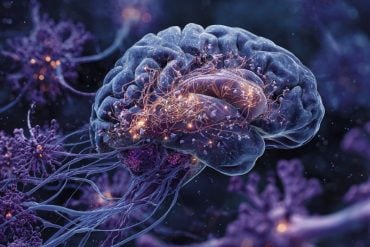Summary: A new study suggests that amlodipine, a widely used blood pressure medication, could help manage ADHD symptoms. Researchers tested five potential drugs in rats bred for ADHD-like behaviors, and only amlodipine significantly reduced hyperactivity. Follow-up studies in zebrafish showed that the drug also decreased impulsivity, confirming its effect on ADHD symptoms.
Further analysis revealed that amlodipine crosses the blood-brain barrier and targets calcium channels linked to ADHD. A review of patient data also found that individuals taking amlodipine reported fewer mood swings and reduced risk-taking behaviors. Given its established safety profile, amlodipine could offer a faster, safer alternative to current ADHD treatments.
Key Facts:
- Crosses the Blood-Brain Barrier: Amlodipine was shown for the first time to enter the brain and influence ADHD-related pathways.
- Targets ADHD-Linked Calcium Channels: Genetic analysis linked ADHD to the same calcium channels affected by amlodipine.
- Potential Safer Alternative: Unlike current ADHD medications, amlodipine is widely used, well-tolerated, and less likely to cause severe side effects.
Source: University of Surrey
Repurposing amlodipine, a commonly used blood pressure medicine, could help manage attention-deficit/ hyperactivity disorder (ADHD) symptoms, according to an international study involving the University of Surrey.
In a study published in Neuropsychopharmacology, researchers tested five potential drugs in rats bred to exhibit ADHD-like symptoms. Among them, only amlodipine, a common blood pressure medication, significantly reduced hyperactivity.

To confirm its effects the team tested amlodipine in zebrafish, an important model for studying brain function sharing about 70% of genes with humans.
The results showed that amlodipine also reduced hyperactivity and impulsivity—core symptoms of ADHD—in these fish. Further analysis of the fish revealed that amlodipine crosses the blood-brain barrier for the first time, meaning it can directly influence brain function.
The researchers then turned to human genetic data and found that, remarkably, ADHD is linked to the same calcium channels in the brain as the targets for amlodipine. This suggests a potential target brain pathway for treatments.
Finally, an analysis of UK-wide patient data showed that people taking amlodipine reported fewer mood swings and less risk-taking behaviour, further supporting its potential as a new ADHD treatment.
Dr Matthew Parker, co-author of the study from the University of Surrey, said:
“Repurposing amlodipine, a well-established blood pressure medication, offers a promising and swift pathway to address ADHD symptoms.
“Our research indicates that, due to its existing approval and safety profile, amlodipine could be rapidly redeployed as a treatment option for ADHD, potentially providing relief to patients sooner than developing new medications.”
Current ADHD medications are effective but come with significant side effects: from appetite loss, high blood pressure, headaches and sleep disturbance and carry a risk of misuse. Amlodipine, which is already widely used and well-tolerated, could offer a new, safer treatment option for ADHD.
Around 25% of patients do not respond well to any current ADHD medication, highlighting the urgent need for new treatment options.
About this neuropsychopharmacology and ADHD research news
Author: Melanie Battolla
Source: University of Surrey
Contact: Melanie Battolla – University of Surrey
Image: The image is credited to Neuroscience News
Original Research: Open access.
“Validation of L-type calcium channel blocker amlodipine as a novel ADHD treatment through cross-species analysis, drug-target Mendelian randomization, and clinical evidence from medical” by Matthew Parker et al. Neuropsychopharmacology
Abstract
Validation of L-type calcium channel blocker amlodipine as a novel ADHD treatment through cross-species analysis, drug-target Mendelian randomization, and clinical evidence from medical
ADHD is a chronic neurodevelopmental disorder that significantly affects life outcomes, and current treatments often have adverse side effects, high abuse potential, and a 25% non-response rate, highlighting the need for new therapeutics.
This study investigates amlodipine, an L-type calcium channel blocker, as a potential foundation for developing a novel ADHD treatment by integrating findings from animal models and human genetic data.
Amlodipine reduced hyperactivity in SHR rats and decreased both hyperactivity and impulsivity in adgrl3.1−/− zebrafish. It also crosses the blood-brain barrier, reducing telencephalic activation.
Crucially, Mendelian Randomization analysis linked ADHD to genetic variations in L-type calcium channel subunits (α1-C; CACNA1C, β1; CACNB1, α2δ3; CACNA2D3) targeted by amlodipine, while polygenic risk score analysis showed symptom mitigation in individuals with high ADHD genetic liability.
With its well-tolerated profile and efficacy across species, supported by genetic evidence, amlodipine shows potential to be refined and developed into a novel treatment for ADHD.







